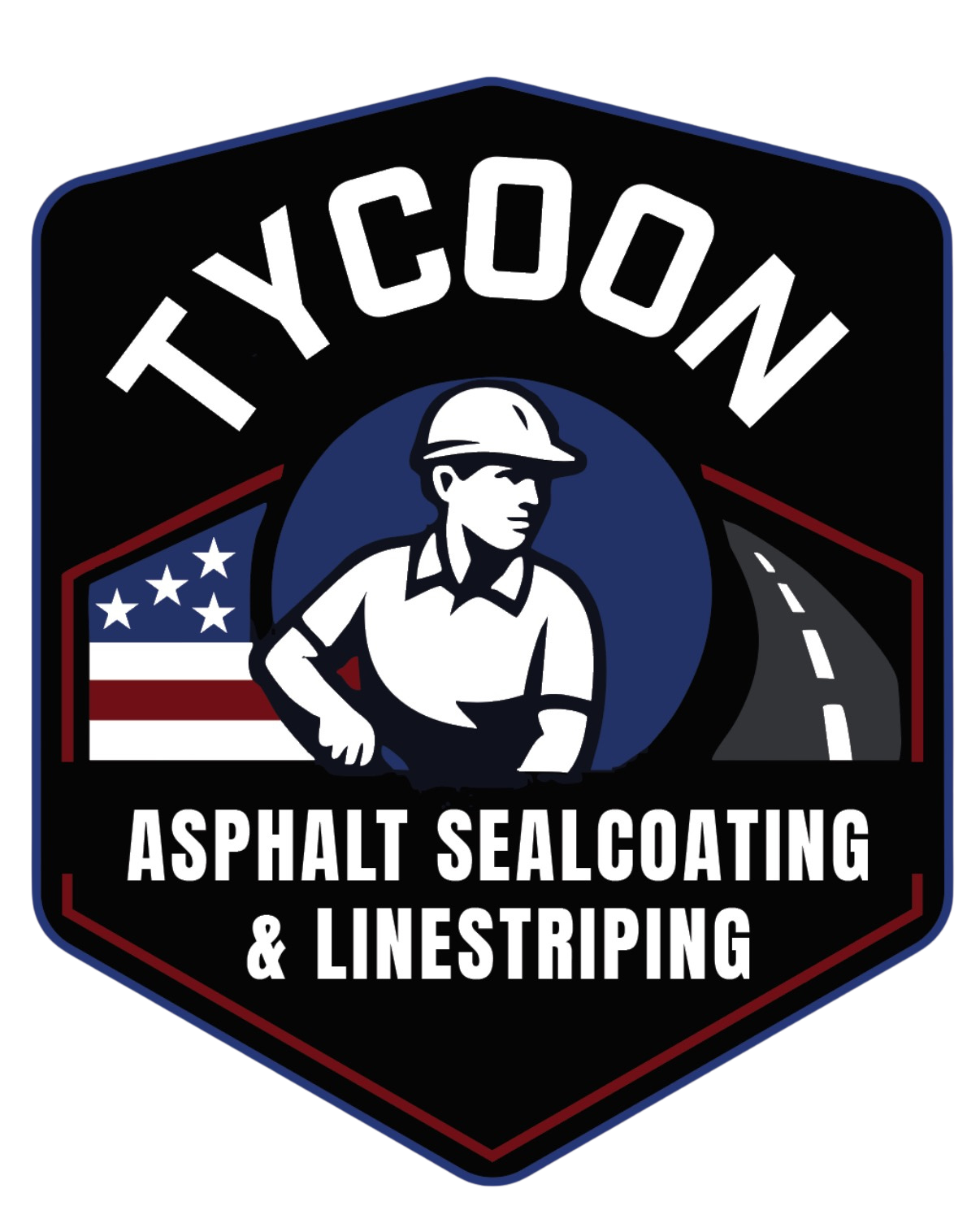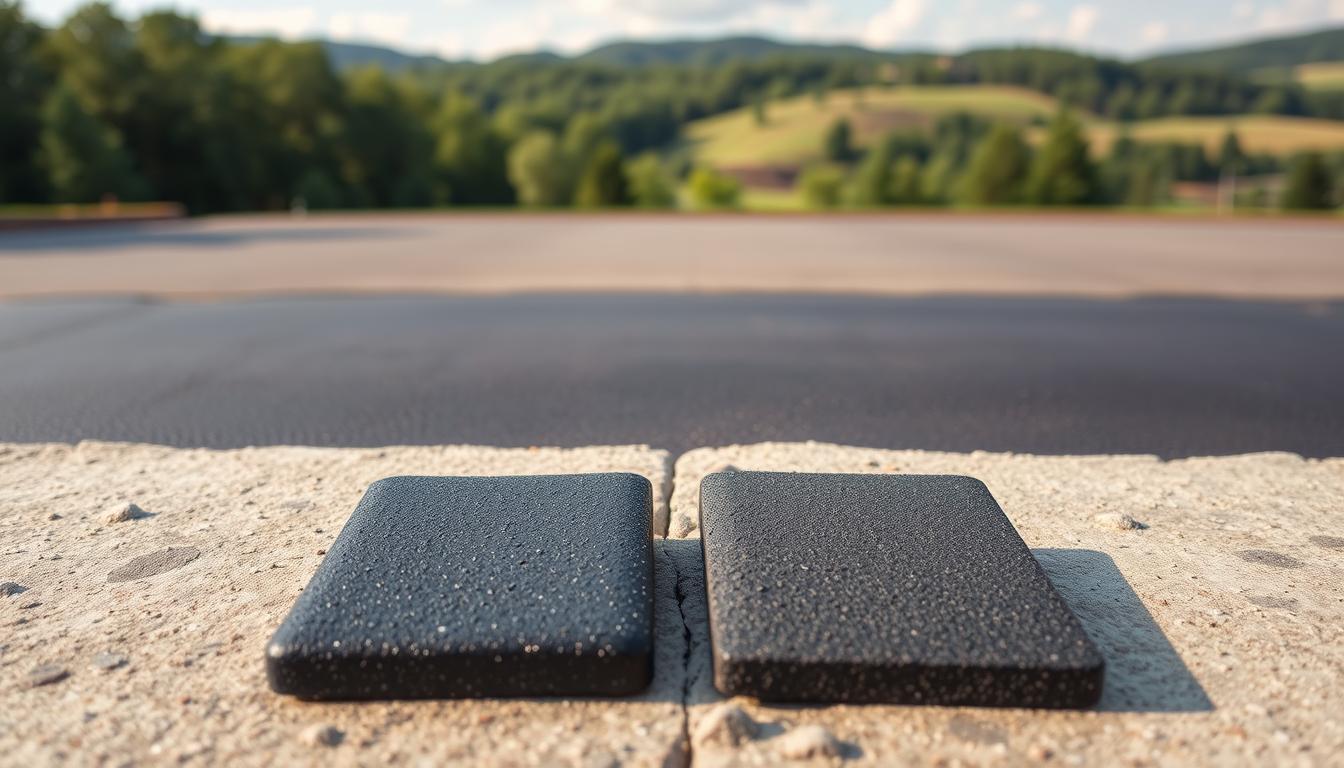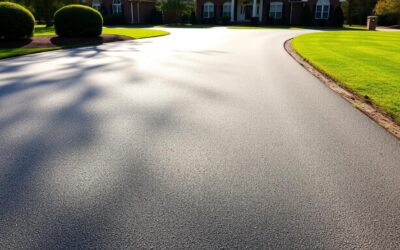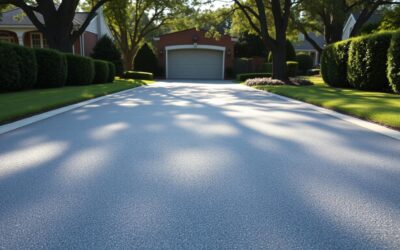We open by defining the two common sealer materials so readers can decide quickly. One product forms a hard, dark film prized for fuel resistance. The other is lower‑odor and more flexible, often drying faster with fewer cracks.
We outline the daily differences you’ll notice: smell, cure time, look, and maintenance rhythm. That helps homeowners and facility managers match a sealer to a driveway parking lot or small parking area.
We also flag key tradeoffs. The traditional product resists spills well but can become brittle and emit strong fumes. The newer emulsion option bends with the pavement, which reduces check‑cracking and suits many climate zones.
Finally, we note that local rules and surface prep matter as much as product choice. Proper mixing, coverage, and cure windows make the biggest difference in how long a sealer keeps a lot looking its best.
coal tar vs asphalt emulsion north carolina: the quick breakdown for driveways and parking lots
We’ll give a crisp, side‑by‑side summary so you can match material to use. The two main types differ in makeup, job‑day feel, and long‑term performance.
How these two sealers differ in makeup, performance, and real-world results
One product starts from a coal‑derived base that cures into a very hard, fuel‑resistant film. It often gives a deeper dark sheen and tolerates marginal weather and higher water dilution.
The other suspends binder in water with emulsifiers, so it bonds well to an asphalt driveway and dries faster with far less odor. It is more flexible, which reduces check‑cracking on seasonal surfaces.
When we’d choose each option based on surface type and use
For fueling areas or sites with heavy oil exposure, we lean toward the fuel‑resistant choice. For general lots, storefronts, and residential driveways, we favor the lower‑odor emulsion sealer or a polymer‑modified formula that boosts durability.
Mixing, dilution, and proper application rates matter more than brand. Follow manufacturer specs and consider traffic, odor tolerance, and the look you want when choosing sealcoating materials.
Performance head‑to‑head: durability, fuel resistance, drying, and appearance
Below we run a hands-on comparison of durability, chemical resistance, drying, and the surface finish you’ll get. This helps plan schedules, materials, and expectations for any sealcoating job.
Durability and flexibility
One product cures to a very hard film that resists scuffing and most oil marks at cure. That rigidity boosts short-term wear resistance but can lead to check‑cracking over time in freeze‑thaw cycles.
By contrast, polymer-modified emulsion options flex with the pavement. That flexibility reduces stress cracking and often extends service life when mixed and applied to spec.
Fuel and chemical resistance
The harder film still holds an edge against gasoline and some chemicals. Modern additive packages for emulsion systems narrow that gap for many commercial and residential sites.
Drying, odors, and finish
We find emulsion products dry faster and make a friendlier work zone with lower fumes and skin irritation risk. Faster drying also shortens lane closures.
Appearance differs too: the hard film gives a deep dark sheen initially, while emulsion trends to a black matte that ages evenly and hides minor scuffs.
Health, environmental impact, and the North Carolina policy landscape
Local policies and chemical risk profiles now play a major role when we pick a sealer for a project. We balance worker safety, stormwater risk, and municipal rules before we bid.
PAHs and safety: why some sealers are under scrutiny
Certain sealers contain high levels of polycyclic aromatic hydrocarbons (PAHs) and benzene. These chemicals raise cancer and ecological concerns when they enter runoff or dust.
By contrast, modern emulsion products report negligible PAH content. That reduces potential contamination of nearby waterways and lowers long‑term health risk for staff and neighbors.
What’s changing locally and regionally
Charlotte‑Mecklenburg and the City of Matthews now ban sealers with more than 0.1% PAHs. Boone limits use near wetlands and watersheds under conditional rules.
Nearby Greenville, SC has a full ban, and major retailers like Lowe’s, Home Depot, Ace, True Value, and Menards no longer stock certain high‑PAH sealants. These shifts make procurement and compliance easier for lower‑risk products.
Greener alternatives and project-level actions
We often specify polymer‑modified emulsion or certified non‑carcinogenic lines such as Pitch Black for tougher cycles. These options lower fumes, reduce runoff risk, and support ESG goals.
Municipalities may request product data sheets showing PAH results. We prepare those submittals and adjust schedules and permits to avoid delays on parking lot work.
Choosing for North Carolina conditions: climate, application, and maintenance cycles
Choosing a sealer starts with matching product behavior to local weather and daily use patterns.
Coastal heat and humidity vs. mountain freeze‑thaw: how each sealer holds up
Along the coast, heat and humidity speed cure times and raise odor concerns. We favor an asphalt emulsion sealer for faster drying and lower fumes. That choice reduces downtime and keeps retail and residential sites pleasant during warm months.
In mountain zones, repeated freeze and thaw demand flexibility. A polymer‑modified emulsion resists check‑cracking and moves with the surface, which helps steep grades and shaded parking areas last longer.
Application windows, water dilution, and polymer modification for longer life
We schedule application to meet temperature, dew point, and overnight lows in the product spec. Timing prevents blushing and weak top layers.
Water dilution must stay inside the manufacturer range. Over‑diluting thins the film and shortens life. Polymer modification at the plant often removes the need for extra additives and boosts fuel resistance.
Budget, lifecycle, and appearance goals for your asphalt surface
Budget decisions should use lifecycle math. An emulsion system that shortens closures and simplifies re‑sealcoating can beat a low bid over years.
If a deep shine is the priority, we note the darker sheen will need more frequent touchups. For a uniform black matte and easier maintenance, the emulsion path is usually the most practical for an asphalt driveway or parking lot.
Our bottom line for North Carolina properties
Here we close with clear guidance to help owners balance performance, compliance, and upkeep.
For most properties we recommend a polymer-modified asphalt emulsion sealer as the environmentally friendly default. It gives good durability, faster drying, and far lower PAH risk than coal tar products.
When oil exposure is constant, we specify enhanced fuel‑resistant asphalt emulsion sealer systems that approach traditional tar strength without the same runoff concerns. Process control matters most: confirm temperature, mix, application rate, and cure windows.
We plan phased work on parking lots to keep driveway parking open and align budgets to lifecycle needs. Tell us your site needs and hours, and we’ll propose a product-plus-plan that fits your surface and schedule.




0 Comments